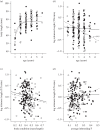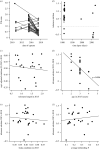Telomere attrition with age in a wild amphibian population
- PMID: 32673551
- PMCID: PMC7423040
- DOI: 10.1098/rsbl.2020.0168
Telomere attrition with age in a wild amphibian population
Abstract
Telomere shortening with age has been documented in many organisms, but few studies have reported telomere length measurements in amphibians, and no information is available for growth after metamorphosis, nor in wild populations. We provide both cross-sectional and longitudinal evidence of net telomere attrition with age in a wild amphibian population of natterjack toads (Epidalea calamita). Based on age-estimation by skeletochronology and qPCR telomere length measurements in the framework of an individual-based monitoring programme, we confirmed telomere attrition in recaptured males. Our results support that toads experience telomere attrition throughout their ontogeny, and that most attrition occurs during the first 1-2 years. We did not find associations between telomere length and inbreeding or body condition. Our results on telomere length dynamics under natural conditions confirm telomere shortening with age in amphibians and provide quantification of wide telomere length variation within and among age-classes in a wild breeding population.
Keywords: Epidalea calamita; growth; natterjack toad; senescence; skeletochronology; telomere length.
Conflict of interest statement
We declare we have no competing interests.
Figures


References
Publication types
MeSH terms
Associated data
LinkOut - more resources
Full Text Sources

